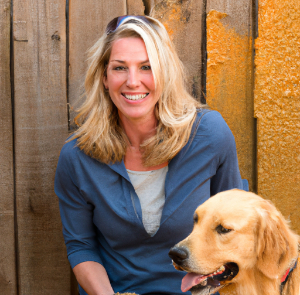Canine separation anxiety causes serious distress and suffering for your dog and can be resolved with appropriate medications coupled with behavioral modification.
Separation anxiety experienced by your dog can cause needless pain for your dog and emotional and financial harm for you.
According to behavioral specialist Dr. Mary Ann Vande Linde in March 2009 NAVC Clinician's Brief, as many as "17% of dogs in the United States suffer from separation anxiety" and "more than half the dogs that have it go undiagnosed".
Signs of Separation Anxiety in Dogs
Symptoms associated with separation anxiety typically occur when owners are absent, sometimes even for a few moments. Signs noted are:
In some cases, it may necessary to videotape your dog's behavior when you leave your home to determine whether separation anxiety is the proper diagnosis.
Symptoms of canine separation anxiety may worsen over time if appropriate intervention does not occur. It is important to remember that your dog is not acting in anger or spite if he is experiencing signs of separation anxiety, but instead is in severe distress.
How is Separation Anxiety in Dogs Treated?
Treatment for dogs suffering from separation anxiety is two fold and involves:
Medications Used to Treat Separation Anxiety in Dogs
Currently, there are two drugs which are commonly used to help treat canine separation anxiety. These drugs are:
Clomipramine and fluoxetine act to decrease your dog's anxiety level, making successful behavioral modification training more achievable. They are not meant to be used without the aid of behavioral modification in treating separation anxiety for dogs. However, these drugs can make modifications to your dog's behavior easier and faster to achieve.
Other drugs sometimes used when treating separation anxiety in dogs are alprozolam and diazepam. These are short-lived but rapid-acting drugs which may give your dog additional relief from anxiety at the start of a behavioral modification training program.
Behavioral Modification Training Techniques for Separation Anxiety in Dogs
Behavioral modification techniques are fairly simple to implement but patience and persistence is necessary. Separation anxiety is not a problem which can be resolved overnight.
Your dog will need to learn that only calm behavior will be rewarded. You must learn to ignore attention seeking behaviors initiated by your dog, such as exuberant greetings when you arrive home.
You don't want to punish bad behavior which you discover on returning home after an absence. Refraining from punishment may be difficult if your dog has engaged in destructive behavior or urinated or defecated in the house. Try to remember that your dog behaved this way out of anxiety from being left alone, not out of malice. Punishing your dog will only make the anxiety worse and serve to confuse your dog.
Positive reinforcement will be much more effective in training your dog and modifying his behavior than punishment. However, you must be certain you are not reinforcing unwanted behavior. This is why you must ignore your dog on arriving home or when your dog is soliciting your attention. Only when your dog is calm and relaxed should you initiate any interactions with your dog. Calm, relaxed behavior should be rewarded with special food treats, toys or affection.
Another important part of behavior modification is decreasing the commotion which occurs when you leave your dog. Avoid long, drawn-out good-byes. Instead, provide your dog with a distraction, such as a treat or toy, when you leave the house and leave while your dog's attention is not focused on you.
